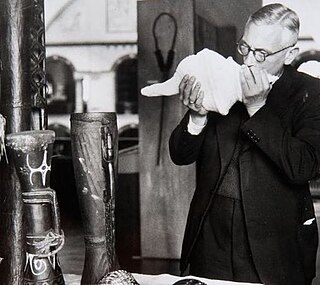
Ethnomusicology is the multidisciplinary study of music in its cultural context, investigating social, cognitive, biological, comparative, and other dimensions involved other than sound. Ethnomusicologists study music as a reflection of culture and investigate the act of musicking through various immersive, observational, and analytical approaches drawn from other disciplines such as anthropology to understand a culture’s music. This discipline emerged from comparative musicology, initially focusing on non-Western music, but later expanded to embrace the study of any and all different kinds of music of the world.

The United States' multi-ethnic population is reflected through a diverse array of styles of music. It is a mixture of music influenced by the music of Europe, Indigenous peoples, West Africa, Latin America, Middle East, North Africa, amongst many other places. The country's most internationally renowned genres are traditional pop, jazz, blues, country, bluegrass, rock, rock and roll, R&B, pop, hip-hop/rap, soul, funk, religious, disco, house, techno, ragtime, doo-wop, folk, americana, boogaloo, tejano, reggaeton, surf, and salsa, amongst many others. American music is heard around the world. Since the beginning of the 20th century, some forms of American popular music have gained a near global audience.

Indigenous music of North America, which includes American Indian music or Native American music, is the music that is used, created or performed by Indigenous peoples of North America, including Native Americans in the United States and Aboriginal peoples in Canada, Indigenous peoples of Mexico, and other North American countries—especially traditional tribal music, such as Pueblo music and Inuit music. In addition to the traditional music of the Native American groups, there now exist pan-Indianism and intertribal genres as well as distinct Native American subgenres of popular music including: rock, blues, hip hop, classical, film music, and reggae, as well as unique popular styles like chicken scratch and New Mexico music.
Chicken scratch is a kind of dance music developed by the Tohono O'odham people. The genre evolved out of acoustic fiddle bands in southern Arizona, in the Sonoran desert. These bands began playing European and Mexican tunes, in styles that include the polka, schottisch and mazurka.

From the American Revolutionary War to the start of the American Civil War, American music underwent many changes. The folk vernacular traditions diversified and spread across the nation, while a number of prominent composers of European art music also arose.

The latter part of the 19th century saw the increased popularization of African American music and the growth and maturity of folk styles like the blues.

Anglo-American music is derived from the English culture of the Thirteen Colonies of the United States and has been a founding influence for American folk and popular music.
This is a list of folk music traditions, with styles, dances, instruments, and other related topics. The term folk music cannot be easily defined in a precise manner. It is used with widely varying definitions depending on the author, intended audience and context within a work. Similarly, the term traditions in this context does not connote any strictly-defined criteria. Music scholars, journalists, audiences, record industry individuals, politicians, nationalists, and demagogues may often have occasion to address which fields of folk music are distinct traditions based along racial, geographic, linguistic, religious, tribal, or ethnic lines, and all such peoples will likely use different criteria to decide what constitutes a "folk music tradition". This list uses the same general categories used by mainstream, primarily English-language, scholarly sources, as determined by relevant statements of fact and the internal structure of works.

In many parts of sub-Saharan Africa, the use of music is not limited to entertainment: it serves a purpose to the local community and helps in the conduct of daily routines. Traditional African music supplies appropriate music and dance for work and for religious ceremonies of birth, naming, rites of passage, marriage and funerals. The beats and sounds of the drum are used in communication as well as in cultural expression.
The Society for Ethnomusicology is, with the International Council for Traditional Music and the British Forum for Ethnomusicology, one of three major international associations for ethnomusicology. Its mission is "to promote the research, study, and performance of music in all historical periods and cultural contexts."
This is a timeline of music in the United States from 1950 to 1969.
This is a timeline of music in the United States from 1820 to 1849.
This is a timeline of music in the United States from 1920 to 1949.
George Herzog was an American anthropologist, folklorist, musicologist, and ethnomusicologist.



